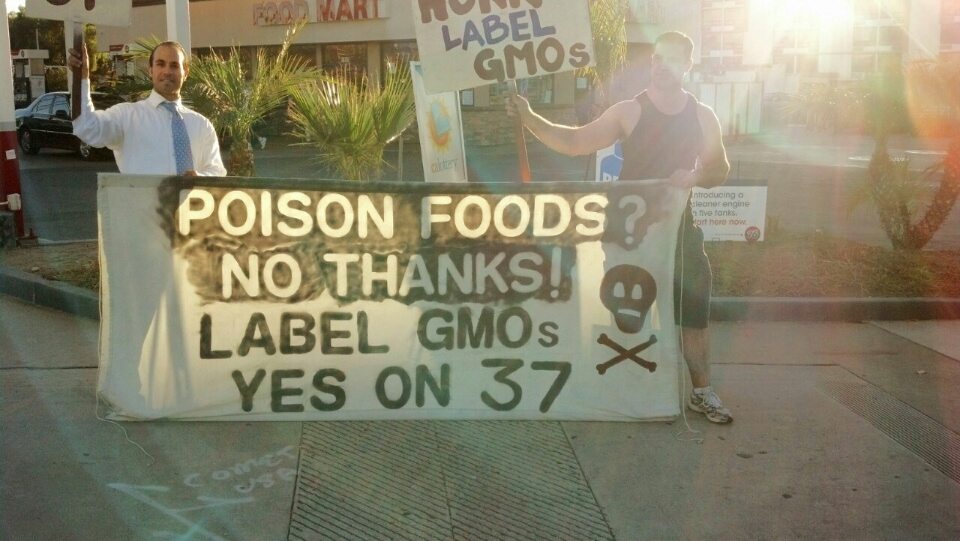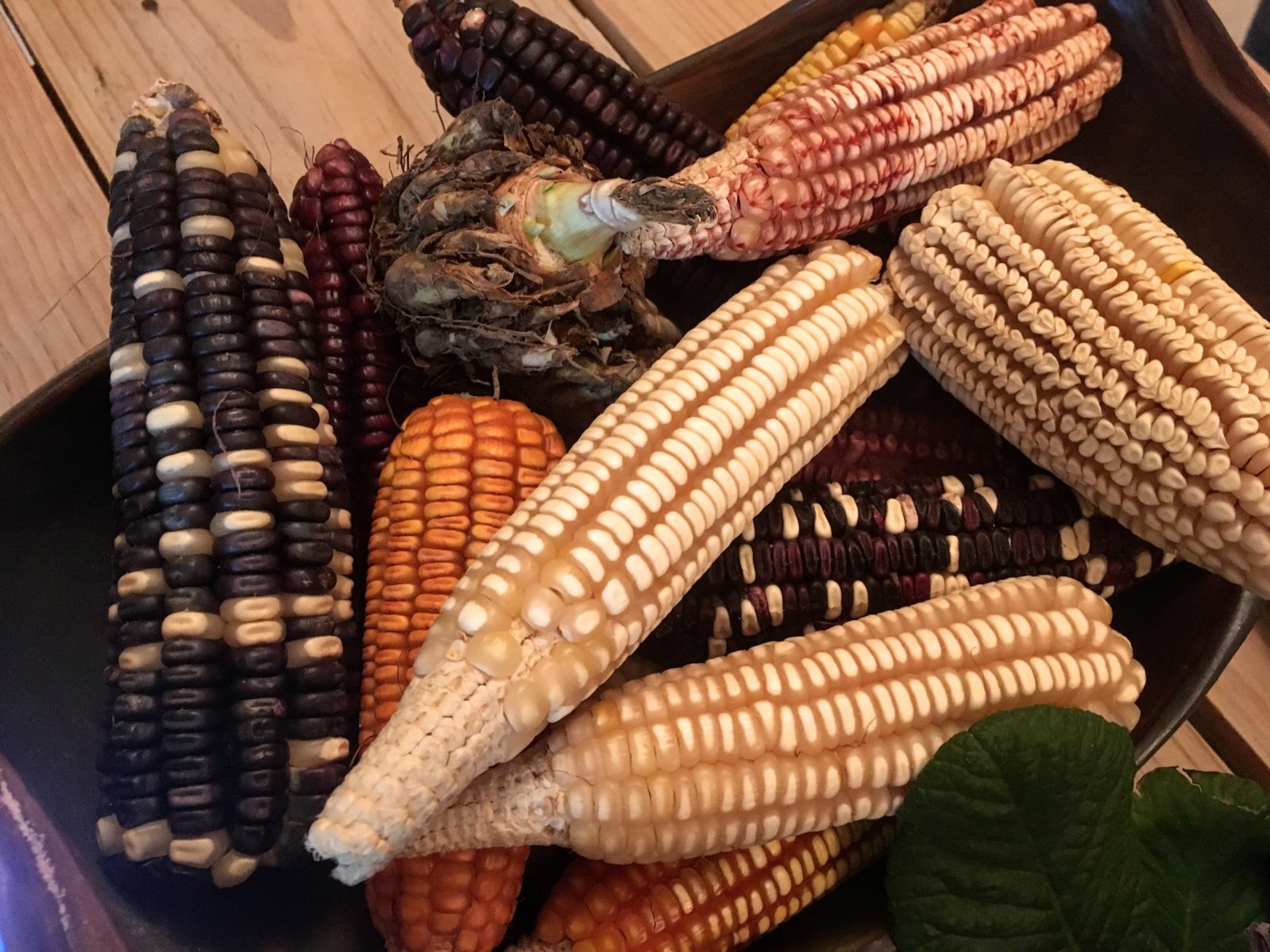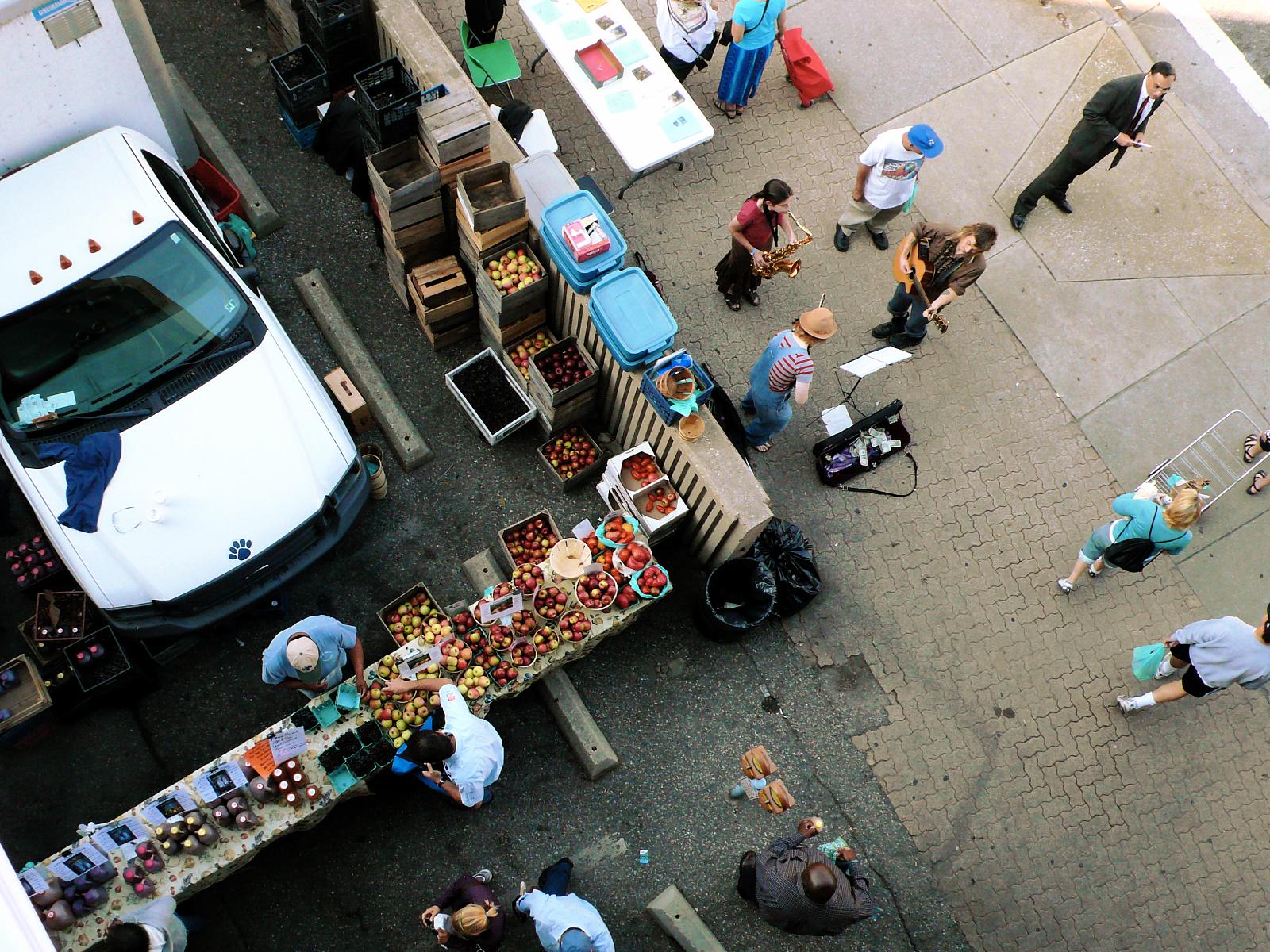The carcass concierge
Local food is hard. But local meat, especially local beef, is harder still.
Blame the cow, designed by nature to produce dozens of cuts of meat in proportions that bear absolutely no relationship to market demand. If customers had their way, a cow would consist mostly of ribeyes and sirloin, and the old rule of one pound of hanger steak per cow would be a thing of the past. But cows pay no mind, stubbornly continuing to produce muscle (and fat and bone) according to their biology.
Big Meat doesn’t worry too much about the ratio of ribeye to hamburger. By processing thousands of animals a day, they’re able to offer a large supply of everything at a price everyone can live with. But a local meat provider that wants to do things the right way? That kind of company has a real challenge. Once you’ve figured out humane treatment of animals, small-scale processing, and logistics, and once you’ve got a wonderful product and a wonderful story, you come up against cow anatomy. Every cow, after all, only has two tenderloins. If a big steakhouse wants 50 for a week’s meal service, that requires the slaughter of 25 cows. Someone else has to figure out what to do with the rest—thousands and thousands of pounds of extra meat.
 Joe Fassler
Joe Fassler For small-scale meat outfits, ground beef is a tougher sell than flank steak. Above, a $19 Happy Valley burger at The Little Beet Table
Is it even possible? Yes, says Dan Honig. Honig is co-founder of the Brooklyn-based Happy Valley Meat Company, which over the past couple of years has built a farm-to-restaurant distribution business that buys whole animals from farmers in central Pennsylvania, processes them at a pair of slaughterhouses, and sells their cuts to 30 restaurants in New York and Philadelphia. It’s a personal business, and a tricky one. The scale is so small that the loss of one key customer could have the whole company reeling. But for now, it’s thriving, delivering quality meat and a deep connection to farmers to a group of chefs who think it matters.
How did Happy Valley do it? Here’s the most important thing: It’s all about the hamburger.
From bioethics to butchery
Dan Honig isn’t a guy you’d expect to run a meat company. In college, stunned by what he learned in class about industrial animal agriculture, he became a vegetarian. (This was a surprise to his family, whose culinary culture, he says, is “Fry it, because that’s delicious.”) After completing a master’s in bioethics from New York University, he applied for a job at Heritage Foods—a specialty distributor that bought heritage breeds of turkeys, pigs, and other animals from small Midwestern farms and sold them to restaurants in the Northeast. He wanted to learn more about the system and work for a company he felt was trying to reform it.
 Happy Valley Meat Company
Happy Valley Meat Company Co-founders Dan Honig, right, and Alex Dimin
“It didn’t really occur to me until the interview that it was weird I didn’t eat meat,” he says.
Ultimately, Honig became Heritage’s director of mail order—which is where he learned how to FedEx meat in bulk. He then moved on to director of sales, and eventually director of operations for the Heritage Butcher Shop, the company’s now-shuttered retail store in Manhattan.
Heritage wasn’t doing local food, and it didn’t sell beef—partly because of the logistical challenge of moving larger animals. So in 2014, Honig decided to start his own company to enter that market. The goal: To serve as middleman between quality farmers of pastured beef and regional restaurants that could appreciate the difference.
Step one: Find a slaughterhouse. Honig and co-founder Alex Dimin spent six months visiting slaughterhouses all over the Northeast. (A PETA tip sheet for vegan protesters supplied a great many addresses.) They struggled to find a suitable facility.
“Some of the plants you feel like you’re entering a top-secret facility,” Honig says. Most places would ask them to hand over their phones at the door, to prevent even the possibility of pictures or video. The practice was so commonplace that Honig preemptively asked Jay Young, founder of Rising Spring Meat Company, near State College, Pennsylvania, if he wanted their phones. His response—Why would I want your phones?—was the first indication that they’d found a partner. They soon found another: Smucker’s Meats in Mount Joy, Pennsylvania.
 Joe Fassler
Joe Fassler Mike Smucker of Smucker’s Meats stands next to a dry-aging carcass
Honig and Dimin encountered some skepticism in their early conversations with farmers. “We’re these random New York kids coming in, without a farming background,” he says. But once they established that they could set a good price up front, and that the checks would come on time, farmers started signing up.
The supply chain concierge
The process is pretty simple. Farmers bring a prearranged number of animals to the slaughterhouse—either Rising Spring or Smucker’s, whichever is closer—and the check goes out, usually for around $2,000, within seven days. This is a better price than farmers can get at a big packer, 50 to 70 cents a pound more, or between 25 and 35 percent per animal. It’s one of the advantages of a short supply chain with fewer players taking a slice. The big packers pay on the commodity price, which fluctuates, and a price is not determined until after the animal is graded and slaughtered, which takes time. It can take 60 to 90 days for a farmer to see a check this way, and they never know in advance what they’ll get, since the price is subject to the whims of the global market.
The animal is slaughtered and chopped into serviceable cut (a process that costs Happy Valley from $400 to $600 per animal, 72 cents a pound plus a $70 kill fee) then dry-aged for 21 days. At that point the meat is cryovacced with freezer packs so it can last several days on a truck and FedExed to restaurant clients at a cost of about $1 per pound for the box and ground delivery. The shipping itself is the easy part: FedEx picks up at the slaughterhouse door, and drops off at the restaurant door.
 Happy Valley Meat Company
Happy Valley Meat Company Happy Valley cows
“Distribution is the least exciting thing for people to talk about,” says Honig. “You’re not the farmer, you’re not the chef, so there’s not a lot of sex appeal. Everyone sort of poo-poohs the middleman. But if you’re a farmer, you don’t want to spend time trucking and marketing—you want to farm. And if you’re a chef, you want to cook. So you need a distribution network.”
And Happy Valley, to be fair, is more than just a distribution network. The product is not just premium, pastured beef and lamb. It’s something slightly intangible: complete transparency, peace of mind that the animals came from a good place and were treated well until the end, a story that customers want to hear and are happy to pay for.
Not only can Happy Valley tell customers where their animals were born, how they were raised, and where they die, it offers a front row seat to every aspect of the process—like a supply chain concierge. This goes beyond the monthly farm visits, where vanloads of chefs come down from Philly and New York to visit each operation, sometimes even staying overnight at the farmer’s house. Mike Poiarkoff, chef of Brooklyn’s Vinegar Hill House, is among those who have come to Rising Spring to help slaughter a cow.
“I’d been to meat lockers before, I’d been to processing plants, but I’d never been able to watch a kill,” he says. He spent the day “suited up on the kill floor, watching the speed and accuracy with which these guys bleed the animal, gut it, and take the pelt off—and being there right there with them, actually getting to help out.”
 Joe Fassler
Joe Fassler The kill floor at Smucker’s Meats
“You have to be very organized,” Pioarkoff says. “If I have a busy week and I need to increase my order to 30 pounds, it’s not guaranteed they’re going to have it. It’s got to be hard to do if you don’t have a menu that can change frequently.”
Yet local, pastured beef with a story is so desirable (and hard to come by) that chefs have been willing to make adjustments. Take Adam Starowicz, executive chef at Manhattan restaurant the Little Beet Table, who says he only serves ingredients that come with a side of narrative. “Every purveyor that I go to, every distributor that I talk to, the first thing I say is: all the products? Give me the stories behind them,” he tells me. “That is absolutely the focus.”
While other ingredients come in by truck every morning, Happy Valley orders arrive once a week by FedEx. That means more planning, preparation and space—tradeoffs Starowicz says are worth it. “I need to be able to store an entire week’s burgers somewhere at a very small New York City restaurant,” he says. “We just make do. You have to change the way you do things. It’s totally worth it to have this awkward high tower of burgers on the back shelf of the walk-in because we feel great about the product we’re buying.”
Whole animal Tetris
 Joe Fassler
Joe Fassler Ground beef
Which brings us to burgers, and the truly tricky part of Happy Valley’s business: matching the supply from the cow with the demand from the restaurants. It’s like a game of beef Tetris, matching dozens of primal cuts to dozens of different clients, each with different needs.
“There are portions of the year where we have no sirloin,” says Leland Whitehouse, Happy Valley’s head of sales. “We were up to our eyeballs in strips in December, and everybody wanted rib eyes. Then in January and February, we had nothing but rib eyes and we’re totally tapped out on strips. There are fluctuations like that that are seasonal or unpredictable. But, steadily, the key to kingdom is ground beef.”
It’s not so hard to sell the steaks—they’re a premium, local product, after all, with a feel-good story customers are willing to pay for. But in order to justify killing more animals—both financially and ethically—Happy Valley has to sell all the meat it has on hand, not just the fancy stuff.
Enter ground beef, and Happy Valley’s main challenge. There’s a lot of it—it can be up to 40 percent of the carcass’s hanging weight, about 200 pounds per animal. And it doesn’t sell as readily. When I first spoke to Whitehouse, in February, the company had 1,000 pounds of ground beef in the freezer. Until recently, it hadn’t been able to buy more than eight animals a week, for fear of getting too backlogged on the cheap stuff.
The problem is the price: Premium ground beef is a market oxymoron. “Commodity ground beef is dirt cheap right now,” Whitehouse says. Happy Valley can afford to sell ground beef for less than rib eye—everyone does—but the $4.50 a pound that it needs to get is more than many restaurants are willing to pay for something that goes into products (burgers) that tend to be the cheaper menu items. Commodity ground beef is $1.87 per pound (as of this writing). Finding the customers willing to pay almost three times that is the hard part.
“Every day, I’m kicking down the door at 16 high-end burger joints, trying to get somebody to move ground beef,” he says. “Ground beef is what I wake up worrying about.”
Until recently, the company was turning away $10,000 dollars a week in steak orders because it was backed up on ground beef. In order to grow, Happy Valley will have to find more chefs like Starowicz, who appreciate the value of the product, and whose customers are willing to pay gourmet prices for humbler dishes.
“I could get grass-fed ground beef for cheaper than I currently get it, but I think the story from Happy Valley is better,” Starowicz says. “If the product doesn’t actually taste better, it’s a tough sell…. Luckily, with Happy Valley, people actually notice that it tastes better. We have to charge $19 for a burger, but people are willing to pay for it.”
 Happy Valley Meat Company
Happy Valley Meat Company Ribeyes are easy to sell. Ground beef is tougher
Last month, Happy Valley finally got the answer it was looking for. Dig Inn, a farm-to-table fast casual chain with 11 Manhattan locations, signed on as a ground beef client. Happy Valley’s business almost doubled overnight. With the burger meat spoken for, it could suddenly meet all the unfulfilled demand, and will soon be able to jump from its currently weekly slaughter of between 8 and 12 cows a week to 16, or even 20.
In the short run, the problem is simply going to be cash flow: how to pay for more animals before all the checks start coming in. But that’s a good problem to have—and, most likely, a temporary one. As long as the clients are there, Happy Valley can FedEx them meat as fast as its slaughterhouses can process it.
“Because of FedEx, as long as we can make sure the farm is doing the right thing, and the slaughterhouse is producing a reliable product, and the operations are going smoothly, it’s kind of endless,” Whitehouse says. “The cool thing about the way the model works is that we never have to start working with bigger farms,” he says.
If, down the road, Happy Valley itself gets big–even really big–its economies of scale will be different. They’ll be in distribution, rather than in farm or slaughter. And that means Happy Valley never has to look like Cargill. Ultimately, that might make the challenge of local food and local beef a little less hard for farmers and chefs—even if, for Happy Valley, it’s never exactly easy.










